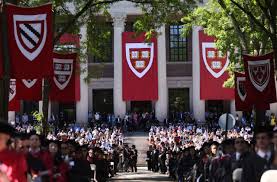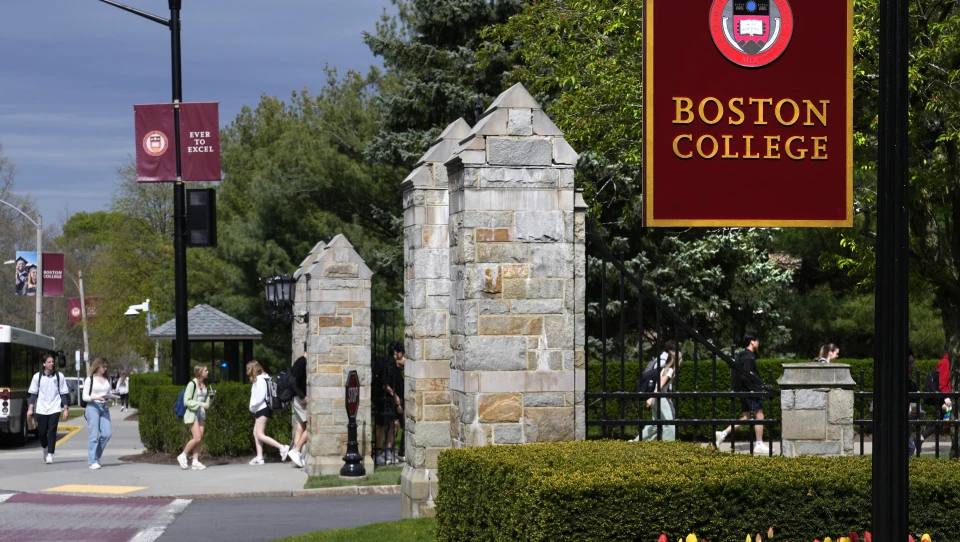The Massachusetts Institute of Technology (MIT), a global leader in science and technology education, has recently made headlines in Boston education news for an unprecedented reason. Following the Supreme Court’s ruling against affirmative action, MIT has announced that its incoming class is likely to be less diverse than in previous years. This development signals a significant shift in the landscape of higher education, particularly in Boston, a city known for its prestigious universities and commitment to diversity.
The Supreme Court’s Ruling and Its Immediate Impact
The Supreme Court’s decision to strike down affirmative action in college admissions has sent shockwaves across the nation, affecting institutions that have long relied on these policies to cultivate diverse student bodies. The ruling, which concluded that race-conscious admissions practices violate the Equal Protection Clause of the Fourteenth Amendment, has forced colleges and universities to reevaluate their admissions processes.
MIT, like many other top-tier universities, has historically used affirmative action as a tool to ensure a diverse and inclusive student body. The university’s leadership has expressed concern that the removal of this policy could lead to a significant decrease in the enrollment of underrepresented minorities. This, in turn, could alter the dynamics of the campus community and impact the university’s ability to foster a diverse educational environment, which has been a cornerstone of its mission.
MIT’s Response to the Ruling
In the wake of the Supreme Court’s decision, MIT has been quick to address the potential implications for its admissions process. The university has reaffirmed its commitment to diversity, stating that it will explore alternative methods to maintain a diverse student body within the confines of the law. However, MIT acknowledges that the absence of affirmative action will make this goal more challenging.
MIT’s admissions office has already begun to modify its evaluation criteria, placing greater emphasis on socioeconomic factors, geographic diversity, and other non-racial attributes that can contribute to a diverse student population. The university is also enhancing its outreach efforts to ensure that talented students from all backgrounds are aware of the opportunities available to them at MIT. Despite these efforts, there is a growing concern that the diversity of the incoming class will not reflect the same level of inclusivity as in previous years.
The Broader Implications for Boston Education
MIT’s situation is not unique; it is indicative of a broader trend that could reshape Boston’s educational landscape. Boston is home to some of the most prestigious institutions in the world, including Harvard University, Boston University, and Northeastern University, all of which have used affirmative action policies to promote diversity on their campuses. The Supreme Court’s ruling has put these institutions in a similar position, forcing them to rethink their admissions strategies.
The potential decline in diversity at MIT and other Boston universities could have far-reaching consequences. Diversity in higher education is not just about representation; it is also about the richness of perspectives, ideas, and experiences that students bring to the academic environment. A less diverse student body could lead to a less vibrant intellectual community, diminishing the overall educational experience for all students.
Moreover, the ruling could exacerbate existing inequalities in access to higher education. Students from underrepresented backgrounds, who may already face significant barriers to accessing top-tier universities, could find it even more difficult to gain admission without the support of affirmative action policies. This could further entrench socio-economic disparities and limit the upward mobility of marginalized communities.
The Role of Boston Education News in Shaping Public Discourse
As the implications of the Supreme Court’s ruling continue to unfold, Boston education news outlets have a critical role to play in shaping public discourse around these issues. It is essential for local media to provide in-depth coverage of how institutions like MIT are responding to the ruling and to highlight the voices of students, educators, and community leaders who are impacted by these changes.
Boston education news must also explore the broader social and economic consequences of the ruling. This includes examining how a decline in diversity could affect the workforce, given that Boston’s universities are major contributors to the city’s economy and play a crucial role in producing the next generation of leaders, innovators, and professionals. By fostering informed discussions, the media can help ensure that the community is aware of the stakes involved and can engage in meaningful dialogue about the future of education in Boston.
Alternative Approaches to Promoting Diversity
In light of the Supreme Court’s decision, universities like MIT are exploring alternative approaches to promoting diversity without relying on race-based criteria. One approach that has gained traction is the use of socioeconomic status as a factor in admissions. By focusing on students from low-income backgrounds, universities can help level the playing field for those who may not have had the same opportunities as their more affluent peers.
Another strategy involves increasing outreach and recruitment efforts in underrepresented communities. MIT, for example, is expanding its outreach programs to identify talented students from diverse backgrounds earlier in their educational journeys. This includes partnerships with high schools in underserved areas and offering pre-college programs designed to prepare students for the rigors of an MIT education.
Additionally, universities are placing a greater emphasis on holistic admissions processes. This means looking beyond test scores and grades to consider a wider range of factors, such as leadership qualities, extracurricular involvement, and personal essays. By doing so, they can better assess the potential of each applicant and recognize the unique challenges they have overcome.
The Importance of Diversity in STEM Education
The implications of MIT’s anticipated decrease in diversity are particularly significant in the context of STEM (Science, Technology, Engineering, and Mathematics) education. Diversity in STEM is crucial for driving innovation and ensuring that the solutions developed address the needs of all communities. A lack of diversity in these fields can lead to a narrow focus on problems and solutions that may not take into account the experiences and challenges faced by marginalized groups.
MIT has long been a leader in promoting diversity in STEM, recognizing that a diverse student body is essential for fostering creativity and innovation. The university’s efforts to increase the representation of women, minorities, and other underrepresented groups in STEM have been widely recognized and have contributed to its reputation as a world-class institution.
The potential decline in diversity following the Supreme Court’s ruling could undermine these efforts and set back progress in diversifying the STEM workforce. It is essential for MIT and other institutions to continue to prioritize diversity in their STEM programs, even as they navigate the challenges posed by the new legal landscape.
Voices from the Community: Perspectives on the Ruling
The reaction to MIT’s announcement and the broader implications of the Supreme Court’s ruling has been mixed, with voices from the community expressing a range of perspectives. Some argue that the ruling is a step toward a more meritocratic admissions process, where students are judged solely on their academic achievements. Others, however, are concerned that this approach overlooks the systemic barriers that have historically prevented underrepresented groups from accessing higher education.
Students and alumni from MIT have also weighed in on the debate. Many have shared their personal experiences of how affirmative action policies provided them with opportunities they might not have otherwise had. They emphasize the importance of diversity in enriching the educational experience and preparing students to thrive in an increasingly globalized world.
Educators and administrators are grappling with the practical implications of the ruling. They acknowledge the challenges of maintaining diversity without affirmative action but remain committed to finding new ways to support underrepresented students. There is a shared understanding that diversity is not just a numbers game; it is about creating an inclusive environment where all students feel valued and supported.
Moving Forward: The Future of Diversity in Boston’s Educational Institutions
As MIT and other Boston universities adapt to the new legal landscape, the future of diversity in higher education remains uncertain. The Supreme Court’s ruling has undoubtedly created new challenges, but it has also sparked a renewed commitment to finding innovative solutions that can promote diversity in a manner consistent with the law.
Boston’s educational institutions have a long history of leading the way in social change, and there is reason to believe that they will rise to the occasion once again. By continuing to prioritize diversity and inclusion, they can help ensure that all students, regardless of their background, have the opportunity to succeed.
The coming years will be crucial in determining how these institutions navigate the post-affirmative action era. It will require creativity, collaboration, and a steadfast commitment to the values of equity and inclusion. Boston education news will play a key role in documenting this journey, providing a platform for the voices of those most affected by these changes, and holding institutions accountable to their commitments.
Conclusion: A Pivotal Moment in Boston Education News
The announcement that MIT’s incoming class will likely be less diverse due to the Supreme Court’s affirmative action ruling is a pivotal moment in Boston education news. It represents a significant shift in the landscape of higher education, with far-reaching implications for diversity, equity, and inclusion.
As Boston’s educational institutions chart a new course in the wake of this ruling, it is more important than ever to remain vigilant in the pursuit of diversity. The challenges are great, but so too is the potential for innovation and progress. By embracing new strategies and remaining committed to the values of inclusion, Boston’s universities can continue to lead the way in shaping a more equitable future for all students.
The road ahead may be uncertain, but with determination and creativity, Boston’s educational institutions can continue to thrive and provide opportunities for students from all walks of life. As the community reflects on this momentous change, there is hope that the legacy of diversity in education will endure, even in the face of new challenges.




